
For four dancers, performance is introspective. It’s a way to explore how the world influences us, how much say we have in that influence and whether it changes us for better or worse. Morgan Hood and Natalee Palmer criticize the power discrepancies between white women and women of color and how media depictions and societal expectations influence what their ideal bodies should look like. Madison Olandt and Michelle Olson examine how someone’s outward representation impacts how they are perceived. Do their self-representations aim to deceive? If so, for whose benefit – their own, or others’?

In their piece titled “The Seed,” Morgan Hood and Natalee Palmer capture the overlap of several social identities, including gender, race, class and sexuality. Media depictions and societal expectations planted in Hood’s and Palmer’s minds color how others view them, Hood said. The two dancers restrict their torsos, thighs and upper arms with Saran Wrap to appear thinner – a criticism of the heavily edited photos of women that appear in advertisements and magazines.
Hood and Palmer, both fourth-year sociology and dance students, studied different cultures’ idealized body images in Sociology 156: “Race and Ethnicity in American Life.” For example, ideal black bodies are curvy, while white bodies are thin, Palmer said. She added she and Hood frequently perform together and are often called twins, but their experiences in the job market differ because of the colors of their skin.
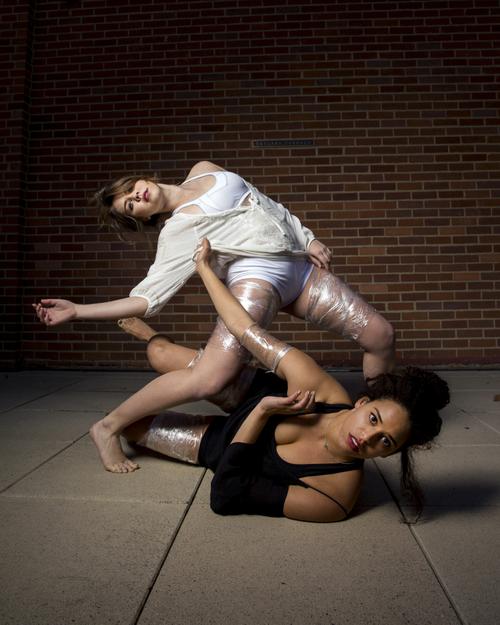
This moment in the routine is telling of the racial conflict between the dancers. Palmer pulls at Hood’s clothing, capturing her desire to fight back and disrupt Hood’s authority over her. Both dancers begin to expose the Saran Wrap under each other’s clothes, revealing their insecurities about ideal female body images.
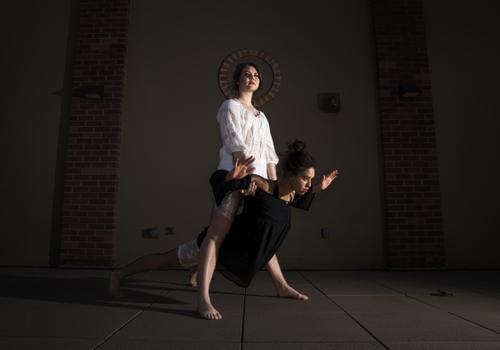
Hood and Palmer begin their performance in a position that highlights the racial divide between the black body and the white body, Hood said. Palmer, with her hands up, symbolizes racial violence against people of color.
“The position demonstrates a dependency that (Palmer) has on me, a white female,” Hood said. “The halo around my head is a powerful symbol of not only the power I have, but the problematic feeling of righteousness.”
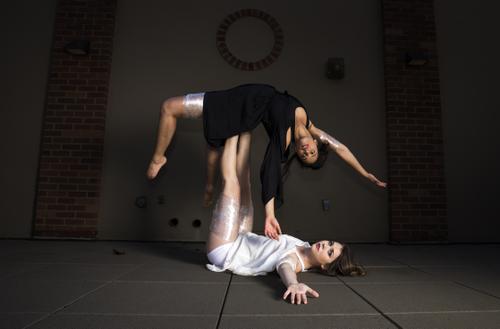
Throughout the dance, Palmer consistently executes moves that require more strength. Palmer said the choreography reflects real-world expectations, because black individuals need to do more to achieve the same recognition as their white counterparts.
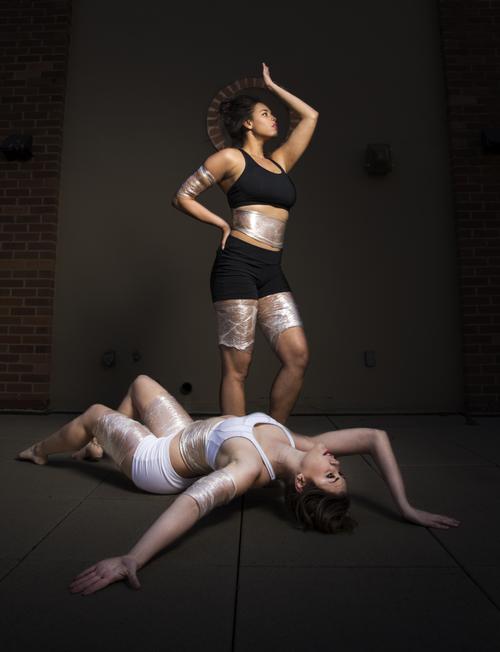
By the end of their performance, the narrative comes full circle – Palmer stands strong and victorious while Hood lies in a restrictive, diminutive position, Palmer said. Both dancers strike sexualized poses, with their backs arched, legs bent and chests out. Their clothing has been cast aside, a commentary on how male attention is awarded to women who show more skin. The halo now encircles Palmer, who appears to have found mobility in embracing her sexuality.
“Black individuals need to do more to achieve the same recognition as their white counterparts.”

Madison Olandt and Michelle Olson use their senior dance project as an opportunity for self-reflection. Their performance, titled “Division,” tackles questions about social perception and deception.
Olandt, a fourth-year psychology and dance student, said her experiences in two contrasting worlds – academia and dance – led her to question how she was allowing her environment to change who she is, in her own eyes and in others’. How do we distinguish between adapting to our surroundings and being molded by them?
Olson, a fourth-year anthropology and dance student, said she struggles to make time for introspection. Through this performance, she asks herself to let go – to loosen the reins and allow for more balance between the way she wants things done and the external influences in her life.
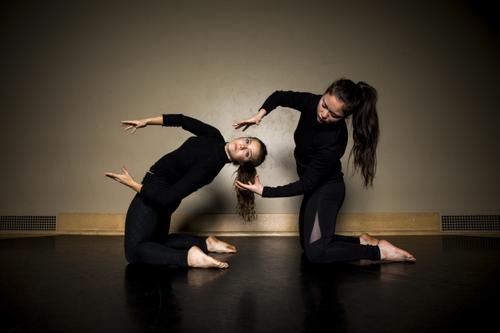
During their performance, Olandt and Olson’s legs and feet form triangular shapes. Olandt said the triangles, symbolic of change, represent how their environment is constantly in a state of transformation. Olson added individuals are never stagnant because they continue to be influenced by new environments and people who surround them.

Olandt said the two dancers represent the duality in everything, but Olandt and Olson are not foils for each other. Olson said they aim to complement and balance one another – two parts of the same whole.
